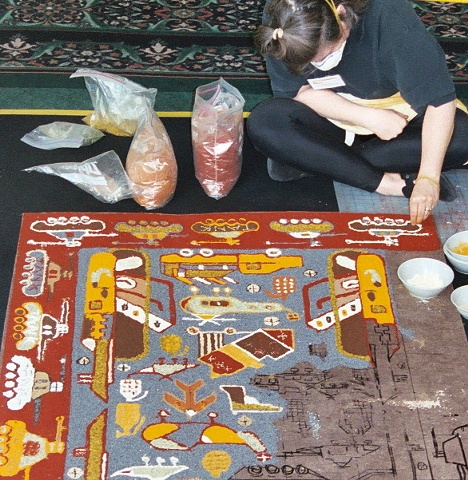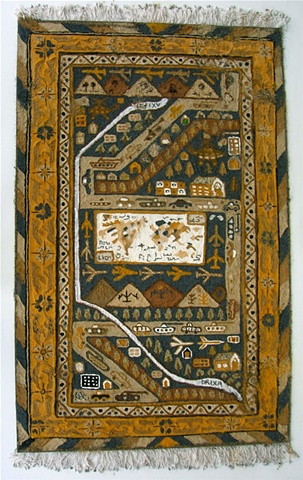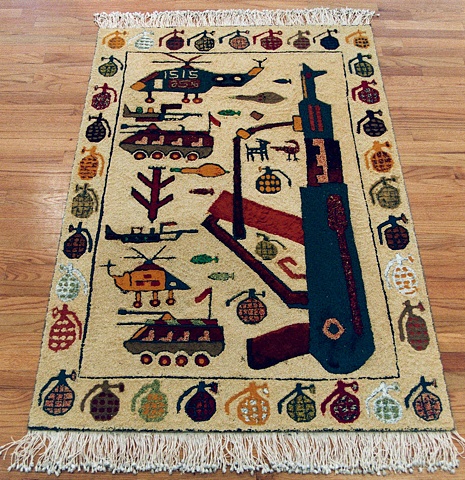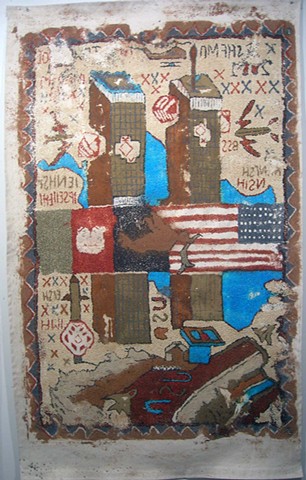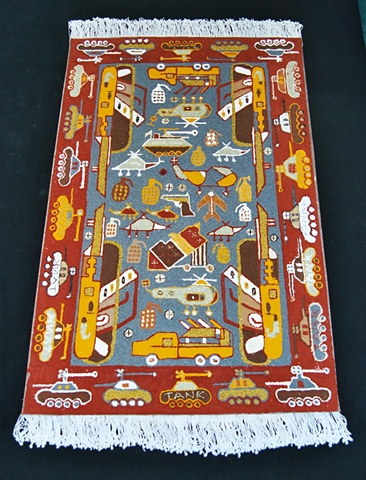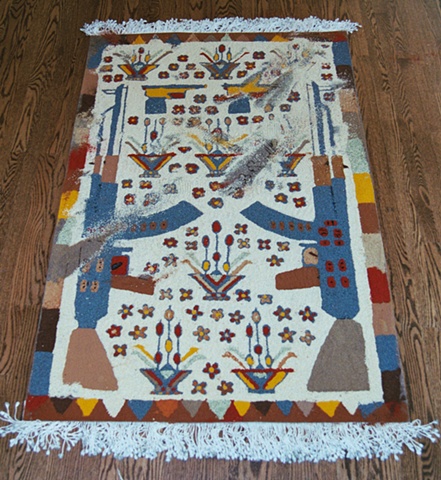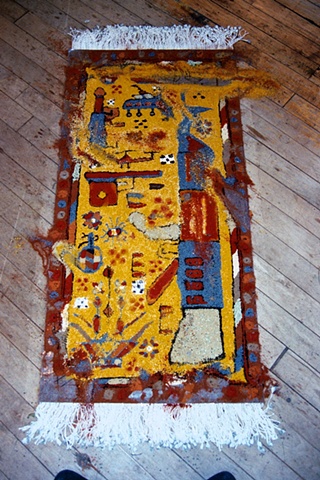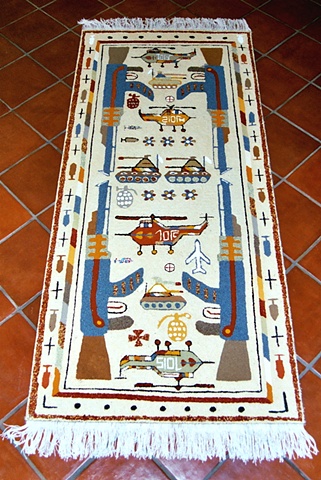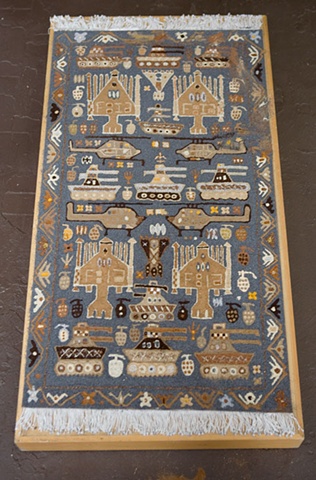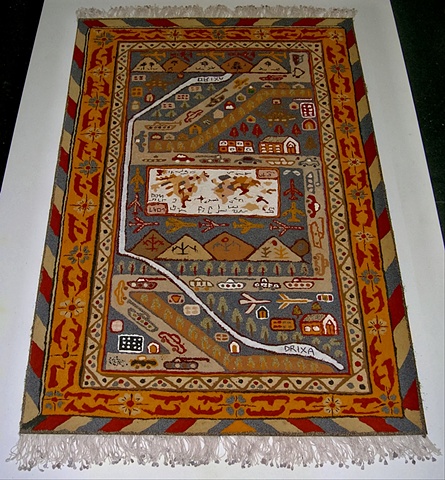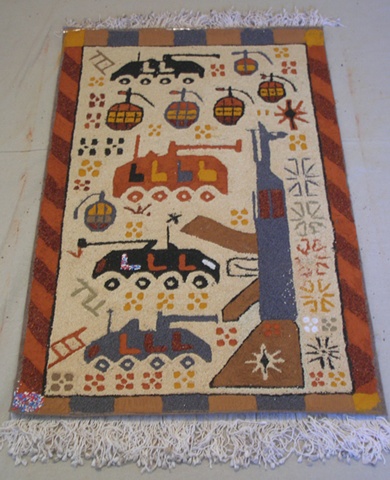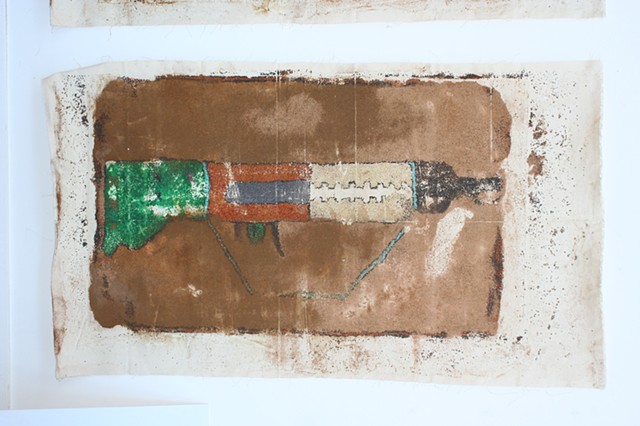War Rugs
War Rug Installations / Prints
2001 - 2020
In 2001, when the US invaded Afghanistan, I began making art installations that drew upon Tibetan Sand Mandalas and the War Rugs woven by Afghani women. But instead of sand, I used spices...
War rugs first appeared in Afghanistan in the late 1970s, when the Soviet Union invaded Afghanistan. Carpets are woven by women and children, and they began to incorporate pictures of the weapons that were suddenly part of their lives into their traditional patterns of flowers, animals and geometric patterns. Subtle at first, the military iconography eventually dominated the textiles, erasing all but the most incidental remnants of centuries of previous motifs. AK-47s line form a framework for tanks, armored personnel carriers, mines, jets, grenades, handguns and bullets. These are called Afghan War Rugs.
Adopting the practice of the Tibetan Buddhist monks who make elaborate sand mandalas as meditations or prayers that, like life, are swept away, I began to reconstruct Afghan War Rugs like mandalas, using spices instead of sand. A meditation, they take up to a week to complete. With fringe and popper firecrackers attached, the rugs exist only temporarily. They are touched, inhaled, even walked on.
At first, I swept up the spices into jars at the end of each exhibition. Now I record the pieces as “monoprints,” fixing the remaining spices to cloth with clear medium. The prints retain much of the color and aroma of the rugs, as well as the pattern of footprints and other incidents that the installation endured.
